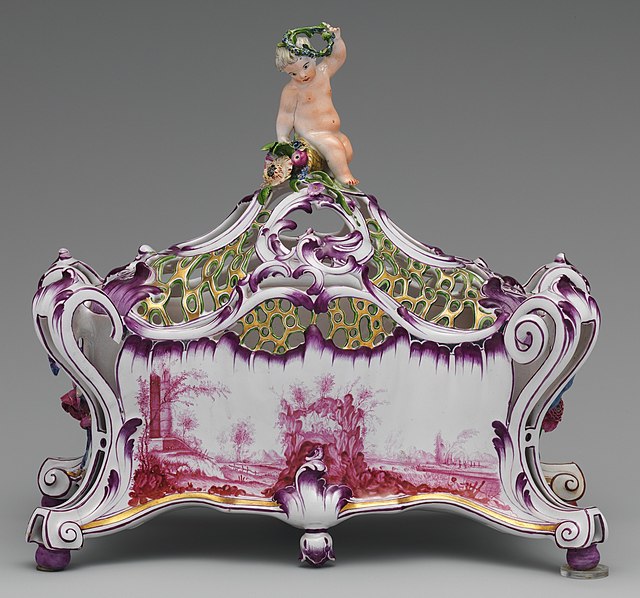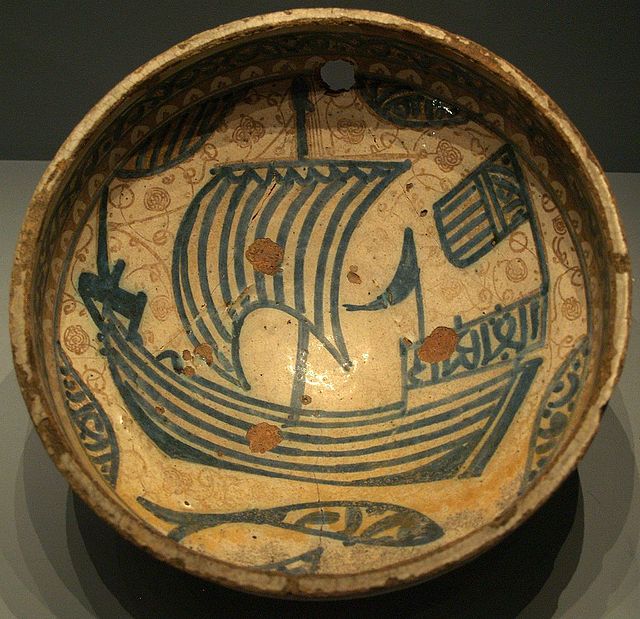Clérissy faience factories
The Clérissy faience factories or ateliers Clérissy were the main pottery factories making Moustiers faience, operated by members of the Clérissy family in Moustiers-Sainte-Marie in the Alpes-de-Haute-Provence, in Marseille, France, and later Varages and elsewhere.
Family members continued to produce faïence in different locations until 1733.
Pharmacy vase
Oblong plate with blue grand feu decoration. (Moustiers) Bérain style decoration (around 1720-1730). Musée de Sèvres.
Plate with blue grand feu decoration: The Good Samaritan (Moustiers) painted by Gaspard Viry (1711)
Oblong plate with blue grand feu decoration (Moustiers)
Faience or faïence is the general English language term for fine tin-glazed pottery. The invention of a white pottery glaze suitable for painted decoration, by the addition of an oxide of tin to the slip of a lead glaze, was a major advance in the history of pottery. The invention seems to have been made in Iran or the Middle East before the ninth century. A kiln capable of producing temperatures exceeding 1,000 °C (1,830 °F) was required to achieve this result, the result of millennia of refined pottery-making traditions. The term is now used for a wide variety of pottery from several parts of the world, including many types of European painted wares, often produced as cheaper versions of porcelain styles.
Modern bowl in a traditional pattern, made in Faenza, Italy, which gave its name to the type
Sophisticated Rococo Niderviller faience, by a French factory that also made porcelain, 1760–65
Hispano-Moresque ware dish from Manises, 15th century, the earliest type of European faience
Rococo tureen, Marseille, c. 1770








